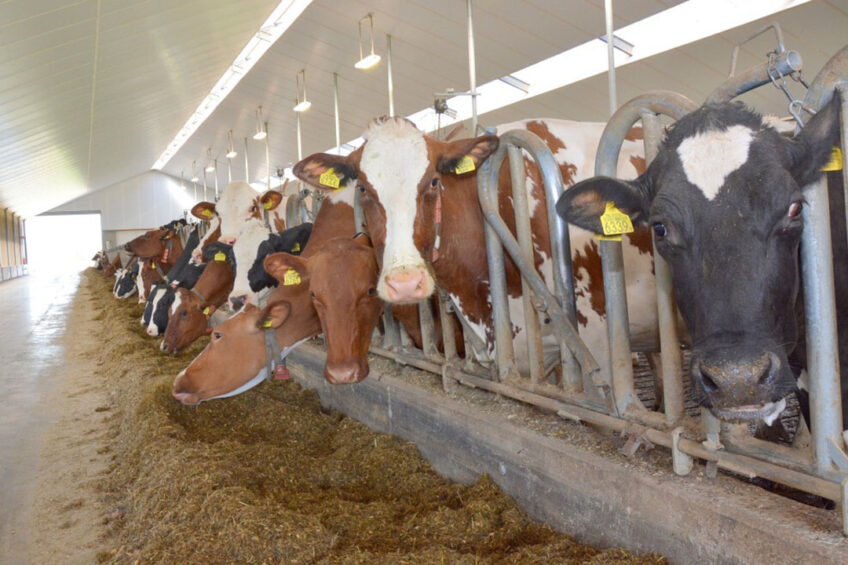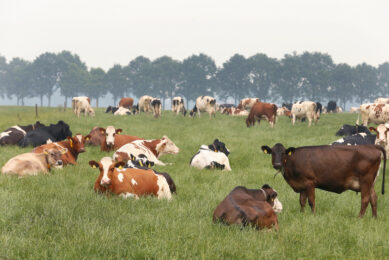How dairy farms can reduce carbon footprint

Dairy farmers across the world are already under fire to reduce their carbon footprint as consumer pressure on being more environmentally friendly mounts.
Indeed, in some countries where dairy farming is more intensive, governments are already reacting to this pressure and are calling for drastic reductions in cow numbers. Culling cows should be the last resort, as research has proven there are a number of other actions farmers can take to reduce the carbon footprint of their farms.
It is possible for farmers to reduce the carbon footprint of a high-yielding herd by 31.5%…
Thanks to research, there are a number of tools that farmers can use to cut their carbon production, including using feed additives like seaweed, cutting the use of nitrogen fertiliser, and changing the management of the cows.
An expert on cattle methane emissions, Dr Tianhai Yan, who is a scientist at the Agri-Food Bioscience Institute (AFBI) in Northern Ireland, has completed some case studies on the Institute’s farm.
Referring to some of his most recent work, Yan said it was possible for farmers to reduce the carbon footprint of a high-yielding herd by 31.5%, while a 16.9% reduction was possible with a spring calving herd.

“There are a range of practical mitigations that can be used on dairy farms to help ensure that emissions from agriculture can be reduced. This includes practical nutrition and management-based practices designed to lower emissions of ammonia and methane,” said Yan.
Yan outlined how the development of energy rationing systems for precision farming had resulted in improvements in the efficiency of milk production and has reduced the GHG emissions per unit of milk produced.
“We are also researching the nutritional benefits of alternative forages for dairy and beef cattle including measuring how this forage as well as feed additives and seaweed extracts can minimise the impact of enteric methane emissions from the herd,” he said.
“This combined with management practices such as reducing the age at first calving to 24 months, improved genetics and fertility has shown that a significant reduction in GHG emissions can be achieved.”
This research formed part of a recent Centre for Innovation and Excellence in Livestock (CIEL) report which is available for farmers to use.
In a report, 8 options of how to reduce the carbon footprint are outlined, which could make a significant difference to emission levels from the dairy sector.
Northern Ireland’s dairy farmers produced £660 million worth of milk in 2020. The sector has reduced its total GHG emissions by 16.1% between 1990 and 2020, achieved by increasing production per cow and reducing the overall herd.
Key carbon-reducing tools
The report advises farmers to complete regular carbon audits of their farms to establish a baseline and to identify areas where they can reduce emissions and their carbon footprint.
Among the nutrition-based strategies suggested are increasing the starch and concentrate proportions in the diet of cattle, within recommended levels, to reduce methane production per unit of feed. This strategy could also increase milk output in some circumstances.
Furthermore, locally sourced products such as peas and beans will also reduce the carbon footprint of farms, especially if they replace soya which was grown in areas where deforestation has taken place.
Farmers are also encouraged to improve the quality and utilisation of forage as a major component of the cow’s diet and to reduce the need for artificial fertilisers while maintaining or enhancing sward productivity. This can be done by including legumes, such as clover, in pastures and promoting soil health and fertility.
Management-based strategies that may be adopted by farmers include reviewing how slurry or manure is stored and applied. Among the options available to farmers are adding additives to reduce emissions from stored manure, precision application of manure and fertiliser and low emission spreading which reduces the ammonia and nitrous oxide emissions while improving nitrogen efficiency.
Join 13,000+ subscribers
Subscribe to our newsletter to stay updated about all the need-to-know content in the dairy sector, two times a week.










